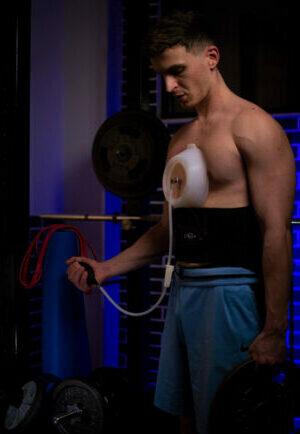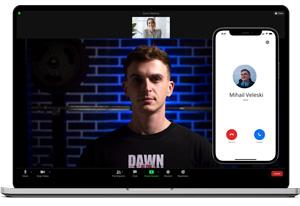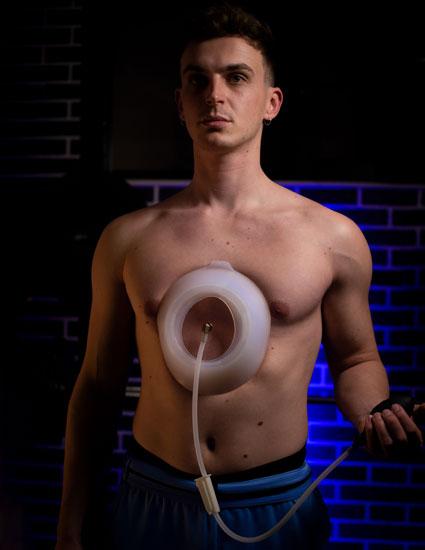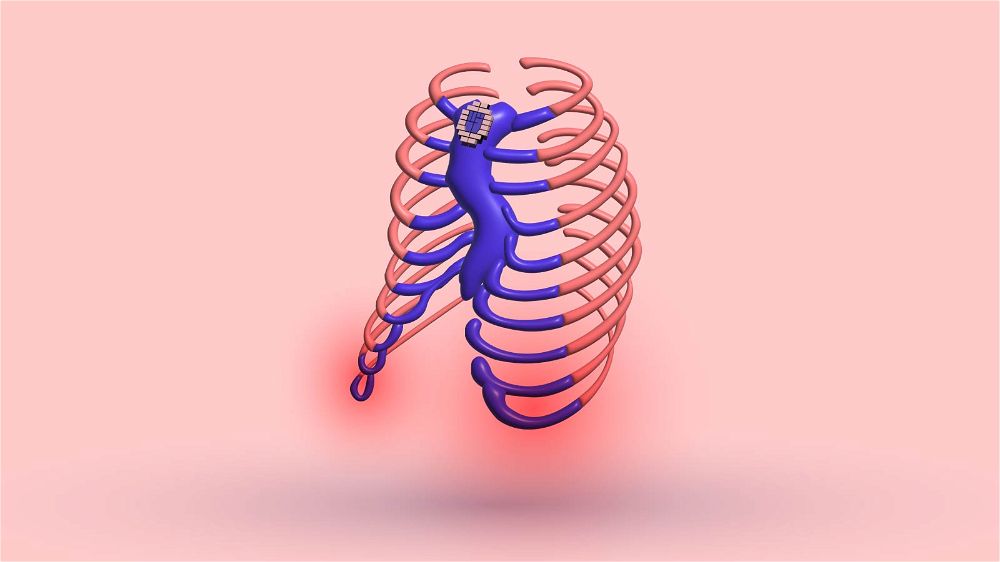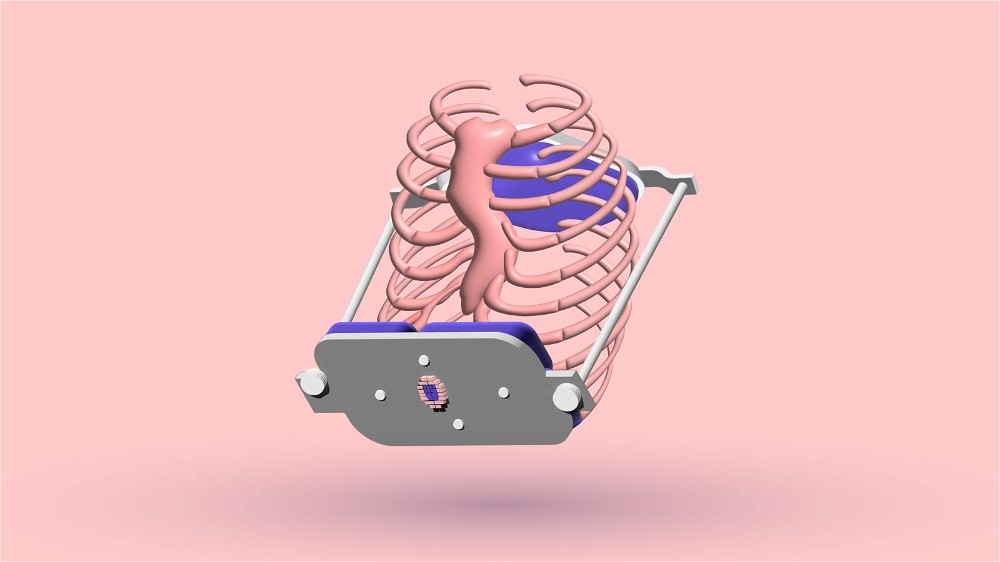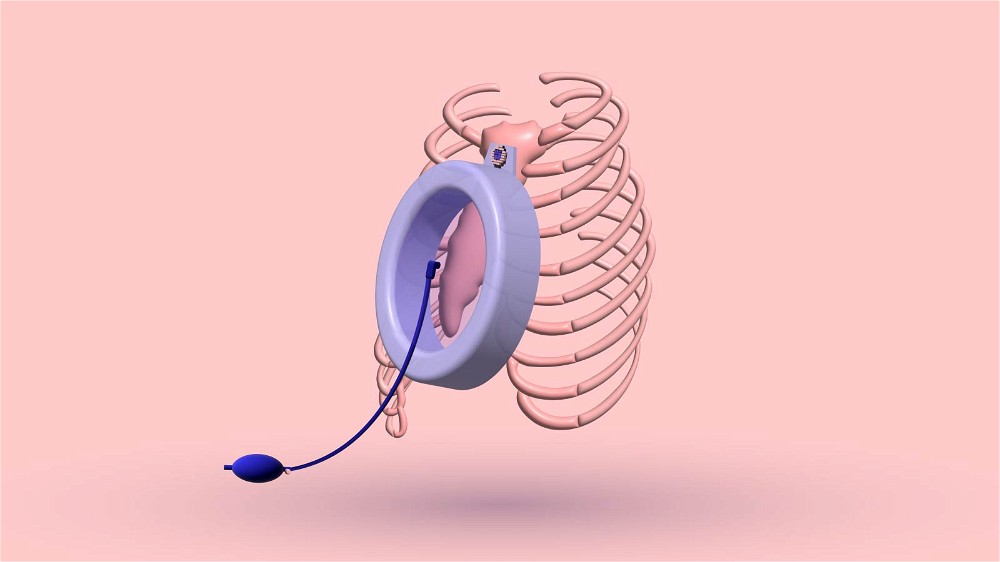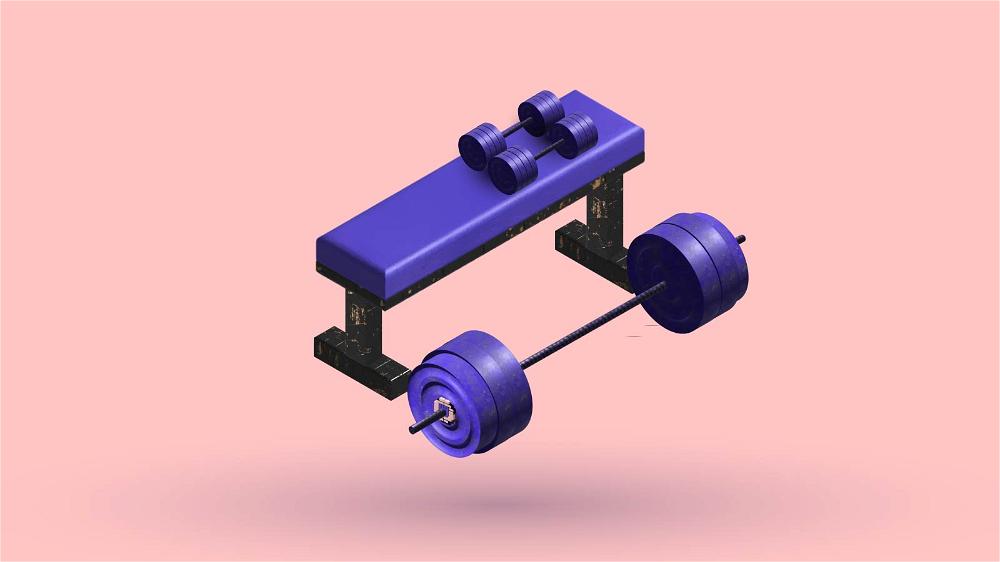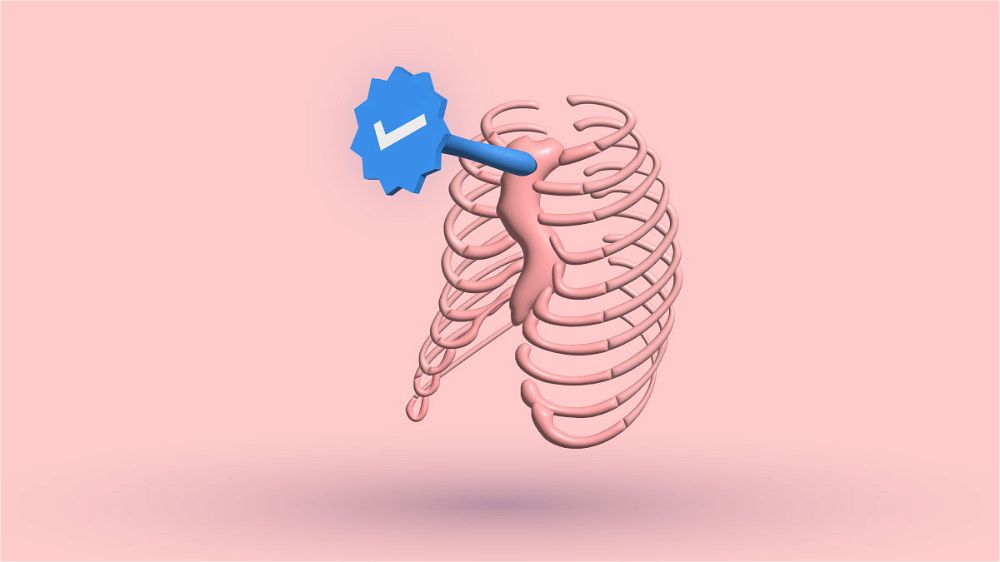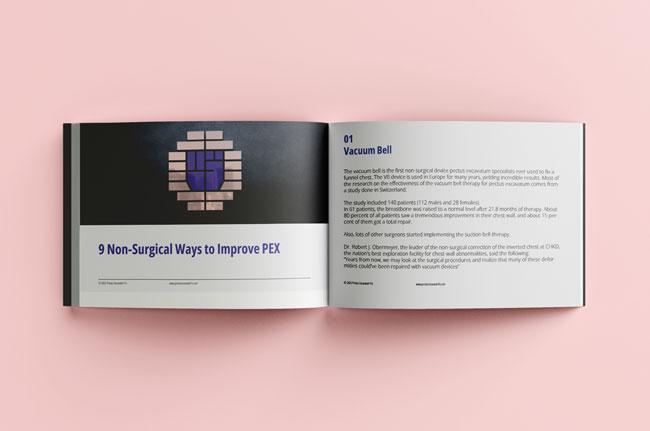While I was on my journey to fix my pectus excavatum non-surgically, I studied all of Dr. Sydney Haje's scientific publications.
I was amazed and inspired by his work and contributions to the pectus community. He even donated free braces for patients to fix pectus deformities in Brazil.
I wrote this post to pay homage to the late Dr. Sydney Haje, one of the most influential people in the pectus community, who helped thousands of patients correct their deformities non-surgically.
INVENTOR OF THE DYNAMIC REMODELING METHOD
He has developed the famous Dynamic Remodeling Method (DR Method), a conservative treatment strategy to fix pectus excavatum and carinatum non-surgically, using exercises and braces.
Dr. Haje demonstrated to the world that people could improve these deformities without surgery, relying on the simple yet effective principles of orthopedics.
Dr. Haje published more than 20 scientific studies in Brazil and worldwide.
SYDNEY ABRAO HAJE BIOGRAPHY
Sydney Abrao Haje (1952 – 2012) was born in Anápolis, in the Brazilian municipality of Goiás. He moved to Brasília in 1969 to finish his studies in medicine.
He graduated as a doctor in 1976 at the University of Brasilia, a federal public university in Brasilia, Brazil. He did postgraduate training as an orthopedic doctor at Sarah Hospital. In addition, he also has a specialization in physiatry.
FIRST SUCCESSFUL CORRECTION WITH BRACE
He treated his first patient 45 years ago, in 1977, when he first created the Compressor Dinâmico de Tórax I and II brace (Dynamic Chest Compression brace in English).
Dr. Haje renamed the correction method in 2006 into what we know today as the Dynamic Remodeling (DR) method. The purpose of the DR method was to develop specific exercises that, along with the compression from the DCC brace, established new ways of treating pectus excavatum and pectus carinatum without surgery.
He transferred the treatment of these chest wall deformities from the hands of the thoracic surgeons to the area of orthopedics.
The number of photo-documented patients who successfully corrected their chest wall deformities without surgery was approximately 5000.
SCIENTIFIC CONTRIBUTION TO PECTUS DEFORMITIES
He proved that pectus excavatum and carinatum are caused by genetically determined growth disorders in the growth plates between the sternal segments in the Nemours Alfred I. Dupont Hospital for Children in Wilmington, Delaware, United States.
In his scientific publications, Sydney Haje said that for each type of pectus deformity, there is a need for a custom treatment plan and ideal age to start the treatment to be most effective.
He famously noted that chest wall flexibility plays a huge role in successful correction and that the flexibility of the chest wall is essential and inconsistent among patients.
He emphasized that the doctor's patience and sharpness are critical for successful correction with thoracic orthoses. In addition to chest wall deformities, he researched respiratory and spinal problems in patients.
PUBLISHING CAREER
The Journal of Pediatric Orthopedics started his international publishing career and 23 others related to pectus deformities.
He discovered the potential cause of the iatrogenic pectus (deformation caused by medical treatment or examination) after cardiac surgery, caused by an injury to the growth plates in an immature skeleton of a young patient.
This was all described in the "International Orthopedics" study. He also created radiographic indexes to describe tomographic discoveries and connect them with dissimilar pectus deformities.
HYPERCORRECTION WITH DR METHOD
In International Orthopedics, he discovered how hypercorrection of pectus deformities could occur, even using his revolutionary DR methods. He also found how to correct these complications caused by more than adequate treatment.
He was very unselfish and explained his treatment process in great detail in a book edited by Dr. Hebert Sizinio, a specialist in Pediatric Orthopedics and Neuro-Orthopedics.
The book was published by Revista Brasileira de Ortopedia. His treatment continues to evolve, primarily thanks to his son, Dr. Davi de Podestá Haje.
SPREAD THE METHOD ACROSS THE GLOBE
He brought the brace compression treatment method across the globe. His treatment, research, and teachings benefited many children across all continents.
In addition to various countries in South America, he has taught his treatment of pectus excavatum and carinatum in the United States, United Kingdom, Canada, Turkey, Russia, Croatia, Mexico, and Spain.
IMPACT ON THE UK
Dr. Sydney Haje brought his conservative approach to treating pectus deformities non-surgically to the United Kingdom in 2010, together with his son Dr. Davi Haje.
In 2011, Dr. Sydney Haje returned to the UK to lecture at the Royal Society of Medicine, the leading provider of accredited postgraduate medical education in the UK. The renowned spinal surgeon, Dr. David J Harrison, introduced Dr. Haje to the Royal Society of Medicine in 2011 and called Dr. Haje's work "truly revolutionary."
He said that his method is different and very appropriate for treating patients in the UK and that Dr. Haje's methods were something they couldn't do previously. You can see Dr. David Harrison presentation here. Dr. Haje's treatment is adopted in England with his name.
He has been the main speaker at the Chest Wall International Group meetings many times and shared his treatment methods unselfishly with his colleagues to successfully use his scientifically proven method for their patients.
UNSELFISHLY HELPING THE COMMUNITY
He always helped the desperate pectus patients of Brasilia. He created the first-ever program for the conservative treatment of pectus deformities. He shared it in a public network in Brazil in 1995.
He has distributed his Dynamic Remodeling braces for free in the Federal District in Brazil. I consider true generosity and always feel inspired when I learn more about Dr. Haje.
Coincidentally, a local TV station showed a program where patients received free Dynamic Remodeling braces from Dr. Haje in government orthopedics at the time of his early death.
FOUNDER OF ORTHOPECTUS
Dr. Sydney Haje was the founder and inventor of the Orthopectus Clinical Center in Brasilia, Brazil, which helped treat thousands of people with pectus deformities worldwide.
He has been an instructor of Pediatric Orthopedics in Brazil. His studies and interests focused on correcting chest wall deformities, especially pectus excavatum and pectus carinatum.
NUMBER OF PRESENTATIONS AT MEDICAL CONFERENCES
He has held numerous presentations at medical conferences about his techniques and methods worldwide.
- Brazil – more than 100
- United States of America – 6
- England and UK – 2; He even held a four-day course in June 2010 and five days in 2011 at the London Orthotic Consultancy clinic.
- Argentina – 2
- Canada – 1
- Spain – 1
- Mexico – 1
- Croatia – 1
- Turkey – 1
AWARDS
He received seven awards for his effort and time spent researching and developing better, painless methods for correcting deformities.
- "Impacto Cientififico" award translates to "Scientific Impact Award – Given as a result of his contribution, effort, knowledge, and development of effective methods for correcting thoracic abnormalities, including pectus excavatum and pectus carinatum. This award has been given by Associação Médica de Brasília(the Medical Association of Brazilia), a non-profit type entity created to ensure the quality of the practice of medicine and appreciation of medical class in the Federal District, to support medical specialties and suitable methods of treatment, in the second edition of Saude Brasilia / Brasilia Award, (medium oriented towards the creating and delivery of professional journalistic content in the Healthcare area), on November 19, 2010.
- "Pesquisa Em Medicina" award, translating to "Research in Medicine" Award for his contribution to researching thoracic deformities, given by the Sindicato dos Médicos do Distrito Federal (Federal District Physicians Union) in the fourth edition of SindMedico Awards, in Brasilia, Brasil on November 6, 2010. SindMédico Awards is a ceremonial event among the medical class that ends with celebrations on Doctor's Day with a tribute to medical experts that stood out in their field, helping thousands of people worldwide.
- "Caffey Award Paper" Award for the research "Growth disturbance of the sternum and pectus deformities: imaging studies and clinical correlation" published in 1999, in the journal Pediatric Radiology. This journal aims to inform the patients about the recent discoveries in all sections of pediatric imaging and all pediatric specializations. This is the official journal of the European Society of Paediatric Radiology, the Society for Pediatric Radiology, the Asian and Oceanic Society for Pediatric Radiology, and the Latin American Society of Pediatric Radiology.
- Award for the medical research "Prevalência das deformidades torácicas pectus carinatum e pectus excavatum entre escolares de Brasília," which translates to "Prevalence of pectus carinatum and pectus excavatum chest deformities among schoolchildren in Brasília". This study showed that the prevalence of deformities was very high in the Federal District, where doctors did the study. There was a notorious lack of information about the deformations and available treatment options. The award was presented at the sixth Medical Congress of Brasilia in August 1999.
- "Award Winner" award for the videotape "Pectus Deformities from an Orthopedic Standpoint: New Concepts" at the 1994 60th American Academy of Orthopaedic Surgeons (AAOS) congress in New Orleans, Louisiana. To access the videotapes, you must be an AAOS Member and log in for full video access. You can find the videotape under no. 24-166 in the video library on the website, in the 1994/1995 catalog. The tapes are also included in the medical videotapes collection of Sociedade Brasileira de Ortopedia e Traumatologia, which translates to the Brazilian Society of Orthopedics and Traumatology.
- He was awarded for the videotape "Etiopatogenia das deformidades da parede torácica anterior," which translates to Etiopathogenesis of anterior chest wall deformities, at the third Medical Congress of Brasilia, on April 7, 1993. You can find the video in the videotape library of the Medical Association of Brasilia 1993.
- Award for creating dynamic compressive orthoses Compressor Dinâmico de Tórax (CDT) was first mentioned in 1979 by Sydney Haje. In 2006 they changed the name of this model to the Dynamic Remodeling (DR) method, which most of us in the pectus excavatum and carinatum community are familiar with. The brace aims to increase the intrathoracic pressure, resulting in the remodeling rib cage. Dr. Haje received the award at the sixth National Seminar on Rehabilitation Medicine in Brasilia in 1986.
11 Sources
- The SARAH Network [Internet]. [cited 2022 Dec 1]. Available from: https://www.sarah.br/en-us/a-rede-sarah/
- Nemours Children’s Hospital, Delaware. In: Wikipedia [Internet]. 2022[cited 2022 Dec 1]. Available from: https://en.wikipedia.org/w/index.php?title=Nemours_Children%27s_H ospital,_Delaware&oldid=1101966106
- 7rZ5zzC7gTjR4s5shDB35mw.pdf [Internet]. [cited 2022 Dec 1]. Available from:
https://www.scielo.br/j/rbort/a/7rZ5zzC7gTjR4s5shDB35mw/?format=
pdf&lang=en - Dr. Sydney A. Haje : Orthopectus | Clinical Center Orthopectus [Internet]. Orthopectus. [cited 2022 Dec 1]. Available from: https://orthopectus.com.br/eng/in-memoriam-dr-sydney-a-haje-clinical-center-orthopectus/
- Dr. Sizinio Kanan Hebert - Ortopedia e Neuro-Ortopedia Pediátrica[Internet].
[cited 2022 Dec 1]. Available from: https://siziniohebert.com/ - Revista Brasileira de Ortopedia - Instruçoes aos Autores [Internet].[cited 2022
Dec 1]. Available from: http://www.rbo.org.br/intrucoes-aos-autores - Dr. Davi P. Haje - Curriculum | Centro Clínico Orthopectus [Internet].[cited
2022 Dec 1]. Available from: https://orthopectus.com.br/prof-dr-davi-p-hajecurriculum-centro-clinico-orthopectus/ - The Royal Society of Medicine [Internet]. [cited 2022 Dec 1]. Availablefrom:
https://www.rsm.ac.uk/
239 - A conservative approach to pectus deformities presented in the United Kingdom - YouTube [Internet]. [cited 2022 Dec 1]. Availablefrom:
https://www.youtube.com/watch?v=mcO51ouMEoc&t=98s - Dr Haje [Internet]. [cited 2022 Dec 1]. Available from:https://www.londonorthotics.co.uk/pectus/dr-haje/
- Chest Wall International Group [Internet]. [cited 2022 Dec 1].Available from:
https://www.chestwall.org/

